🔠SMS – англійська!🔡 ТОП 25 скорочень у неділовій переписці:
🆗
▫️IC = I see
▫️n = and
▫️r = are
▫️u = you
▫️GD = good
▫️RLY = really
▫️B4 = before
▫️TNX/THX/TX/10q = thank you
▫️PLS/PLZ = please
▫️BF/GF = boyfriend/girlfriend
▫️GR8 = great
▫️tmrw = tomorrow
▫️2day = today
▫️BTW = by the way
▫️TTYL = talk to you later
▫️BRB = be right back
▫️IDK = I don’t know
▫️GTG = got to go
▫️ROFL = rolling on the floor
▫️YW – you are welcome
▫️NP = no problem
▫️HAND = have a nice day
▫️RUOK = are you ok?
▫️HRU = how are you?
▫️MU = miss you
https://www.facebook.com/profile.php?id=100007161157952&fref=nf&__tn__=%2Cdm-R0.g-R&eid=ARCGFVgWBp9D-fjIlNBiOVI1lsyLwQKmPzlMj1k_4G8Dzt_9BUiMceMfEu4S0QeYNLg2dHOkQVuNdzZH
субота, 22 червня 2019 р.
Co-Teaching
WHAT IS CO-TEACHING?
In a co-teaching relationship, also known as a “push-in” arrangement, a general education teacher partners with a specialist who may be certified in teaching English Language Learners (ELLs), students with learning disabilities, or some other special population. A co-teaching team works in the general ed classroom; for the majority of the time, students with special needs are not pulled out to receive services in another location.
For instance, a middle school social studies teacher may have an ELL teacher co-teaching with him during one class period because five students in that class are newcomers to the United States and speak only Arabic fluently. A high school teacher may have one or two sections of biology to which many students with IEPs for reading are channeled; a co-teacher who specializes in reading disabilities co-teaches in these classes. A 4th grade teacher may have two students with 504 plans and another three who have specific learning disabilities in her class; she works alongside a special education teacher daily during lessons in the four core academic subject areas.
For more background, download this Brief History of Co-Teaching.
CO-TEACHING STRUCTURES
General education teachers working with specialists in a “push-in” model often work in one of the following structures described by Friend and Cook (1996):
One teach, one observe: One teacher delivers instruction while the other observes student learning. Usually the observer collects data on student understanding so that the co-teaching team can better plan future instruction. Sometimes, specific students are watched closely so that the teachers can determine new strategies to use with them.
One teach, one assist: One teacher takes the lead in providing instruction while the other moves around the classroom, assisting struggling students. This help is not limited to students with special needs; the assisting professional is there to serve whomever needs support.
Parallel teaching: The class is divided in two groups and the same material is presented simultaneously by both teachers. The teachers plan the two groups deliberately to maximize the success of all students; this is not simply a “pull-out” or intervention group sitting in the same room.
Station teaching: Both teachers are actively involved in instruction as students are divided into groups and rotate from one station to the next. There may be stations where students work independently or with a paraprofessional in addition to the two stations the co-teachers facilitate.
Alternative teaching: One teacher takes a small group of students and provides them more intensive or specialized instruction that is different than what the large group receives from the other teacher.
Team teaching: Both teachers teach the content at the same time in tandem or “tag team” fashion.
It is important to note that both teachers have equal status and equal responsibility in all six of these arrangements. In the co-teaching relationships that work best, at no time is one teacher seen as subordinate to the other. Both professionals are credentialed professionals, although each may have his or her specific areas of expertise.
HOW TO MAKE THE MOST OF A CO-TEACHING PARTNERSHIP
Researchers and practitioners have tons of advice about how to co-teach effectively, and as a person who has been “in the trenches” with several different co-teachers, so do I. The advice below sums up the most common recommendations.
1. RESPECT EACH OTHER.
Not surprisingly, mutual respect is critical to the co-teaching relationship. You’ll have to share ideas openly and do much of your work facing students together, so respecting each other is paramount. Sometimes you’ll disagree, and that’s to be expected. As co-teacher and ELL specialist Melissa Eddington says, it’s fine to disagree with someone’s ideas, but don’t make the disagreement about the person.
Teachers in co-teaching situations that don’t work well often report feeling disrespected. Amy* is an ELL specialist paired with a middle school social studies teacher. When they collaborate, Amy feels her suggestions for tweaking whole-class lessons are not taken seriously by her partner. “She respects me as a professional,” Amy says of her co-teacher, “but I think because I’m not experienced in her content, she doesn’t see my input as valuable.”
Susan*, who is licensed in both secondary science and learning disabilities, works with two physical science teachers and one biology teacher. The physical science teachers welcome her ideas and eagerly adjust their lessons based on her suggestions. They are seeing a steady increase of students mastering the required standards in the classes Susan supports. The biology teacher, however, dismisses many of Susan’s ideas and accuses her of “dumbing down” his content. Susan feels disrespected and finds it hard to even be in the room with the biology teacher because he constantly positions himself as “the expert” and places her in a subordinate role.
Words and gestures speak volumes. Take care to show respect for your partner in all you do.
2. CLEARLY DEFINE ROLES AND RESPONSIBILITIES.
Co-teaching works better when the partners agree on who does what, when. Clearly defined roles and responsibilities prevent either partner from feeling the other has overstepped a boundary or shirked responsibilities.
Natalie Marston (2002-2015), an elementary special ed teacher, recommends co-teachers reach agreement on scheduling, classroom procedures and behaviors, classwork and homework policies, grading, and school/home communication together so they present a united front at all times.
Obviously this type of planning requires a great deal of time, ideally before school starts. If extended time is not available prior to the beginning of the school year, then the co-teaching team should expect to put in extra hours before and after school in the first few weeks so things get off to a good start.
My co-teacher Sandie and I did not have advance warning of our assignment. We found out about it on the first teacher workday, leaving us only a few days before the students arrived. For weeks, we both felt like we were playing “catch up and keep up,” but found that having lunch together (and some happy hours together) helped us stay in sync.
3. BE FLEXIBLE.
Innovation is difficult. That’s why so many teachers find themselves falling back on comfortable (and even tired) activities and strategies. Co-teaching allows you to gain another person’s perspective on how instruction might be improved, how students might be best assessed, what resources to use, and so much more. Sometimes this means one person has to put aside his or her favorite tried-and-true strategy and try something different.
When Susan suggested a tactile, quiz-like method for reviewing the periodic table to her physical science co-teaching partners, they were skeptical about the time and materials it might require. They initially felt it would be more efficient to simply give additional notes to their students and then pair students to quiz each other. However, they agreed to try the review Susan’s way. The students loved the activity, and almost every student with special needs passed the chapter test two days later. All three teachers were thrilled and committed to using the activity in future years.
4. PLAN TOGETHER.
The co-teaching relationship brings together two people with wonderfully rich expertise and experiences. Special educators are typically skilled in individualizing curriculum and instruction based on children’s needs (Dettmer et al., 2005; Volonino & Zigmond, 2007). General educators, on the other hand, tend to have broad knowledge of the curriculum, standards, and desired outcomes for the larger group. Therefore, when general educators plan lessons, they tend to aim for the masses (Dettmer et al., 2005). Both perspectives are important, and co-teaching teams need ample planning time to work through how to best utilize each one.
Lack of planning time can lead to territorialism. Without time to plan for a good balance of content and individualization, a general ed teacher may become protective of his subject matter, or a specialist may become protective of his students. Emma*, a high school special ed teacher partnered with two geometry teachers, has experienced this. One teacher often asks Emma to pull aside the five or six students with specific disabilities within his class and work only with them. He sometimes says to her, “You worry about your kids. I’ll worry about geometry.” The principal is now providing an additional hour of planning time for Emma and this teacher. An assistant principal who oversees the math department facilitates the meetings so Emma feels supported and the geometry teacher has another content-area expert to hash things out with.
Keep in mind that planning must include both instruction and assessment. Considering many students with special needs have legal accommodations for assessment (like being provided translation, extended time, or oral reading), it’s best to include both partners fully in designing quizzes, tests, papers, and other high-stakes assessment tasks.
How much time is ideal? One study found that co-teachers desired, on average, 15 minutes to an hour each day for planning (Dieker & Murawski, 2003). This figure corresponds to what worked for my co-teacher and me, and it also confirms what I hear from many co-teachers in the field. Strive to find that time any way you can.
5. DON’T TAKE YOURSELF TOO SERIOUSLY.
Innovation requires failure. Many times, teachers feel they’ve failed somehow during instruction, and in reality, the students haven’t even noticed. We are often our own worst critics. Revisiting or correcting something later in the day (or the next day) doesn’t mean you failed earlier. It means you’ve learned something since. This is the kind of ongoing learning we want to model for our students.
And, as in most situations in life, a little bit of humor goes a long way. Laugh with your co-teacher. Allow students to see both of you laughing with each other and with them when something is surprising, silly, or just doesn’t go the way you planned. In the words of Jennifer Wolf who co-teaches with Melissa Eddington, “Take the work seriously, but don’t take yourself too seriously.”
Eddington adds, “You gotta laugh at each other! Our job is hard, and if you’re not laughing and making light of some things, then it’s just not going to be a good place to be.”
6. COMMUNICATE, COMMUNICATE, COMMUNICATE.
Planning time is one thing; constant communication is another. Not only should co-teachers frequently plan for what standards will be covered, how material will be taught, and how students will be assessed, they should also regularly communicate in less formal ways.
Co-teaching teams have different methods to create and sustain that communication:
- Eddington and Wolf use the Voxer app throughout the school day and on their drives home to send messages back and forth. Voxer works like a walkie-talkie and allows back-and-forth conversation in real time when two people are not physically close to each other. Melissa says, “We’re constantly communicating. We’re talking about specific students. We’re looking at assessments to see what areas are lacking…different things we want to bring to the classroom, things we don’t want to do…”
- Some other teams I’ve worked with use texting and emails throughout each day to share updates. Voxer, texts, and emails can all work well, especially if one teacher has urgent information or an urgent question about a particular student.
- Teams can use Google Docs or other shared documents to keep track of lesson planning and to share feedback with each other on how lessons went. Collaborative documents can also be used to provide each other with information about targeted students.
In addition to ongoing communication, Ariel Sacks (2014) reminds us to periodically check in with our co-teacher about how we are doing in general. She recommends asking your partner the following:
- Are there management items we should clarify, such as when are students allowed to go to the bathroom?
- Are we sharing airtime well?
- Are we dividing grading in an equitable way?
- Would different teaching formats better utilize the two of us in the classroom?
Finally, co-teachers need to present a united front when dealing with parents. Some partners go as far as to create a shared email address from which all communication flows. This may or may not be practical in your situation. At the very least, important parent communication about a student’s progress should be drafted by both parties.
For more in-depth information about communicating and collaborating with your co-teacher, see Communicating and Collaborating in Co-Taught Classrooms (Conderman et al., 2009).
7. SEEK ADMINISTRATIVE SUPPORT.
Sometimes, teachers have been scheduled to co-teach by administrators but didn’t have much advance notice. This is what happened with Sandie and me. We were able to find snippets of time during the school day to use for planning and checking in with each other, but we had no common planning period. If you and your partner don’t have a common planning time when you can frequently collaborate, ask for it. Go to your principal with a couple of proposals about how this can work without too much disruption to the rest of the schedule.
Sometimes co-teachers may not understand fully why they are being asked to team. If this is the case, ask for a meeting with the principal and any others responsible for the assignment. Ask them why they thought the two of you would be a good fit and what they hope you will accomplish with students.
If you’re already in a co-teaching partnership that’s not working well, and you’ve tried to address this with your partner, turn to a trusted administrator next for advice. If you and your co-teacher have not recently been observed, ask the administrator to come sit in on part of a lesson. Tell him or her what you’d like feedback on or what feels like it’s not working well. Debrief with the administrator, ideally with your co-teaching partner. When an observer offers data and feedback to both of you, it may feel different for your partner than when you share things from your perspective. (This co-teaching observation form can help.)
It’s important not to go to other teachers with your concerns. Respect the collegial relationship you have with your co-teacher and don’t do anything that might undermine it. And it should go without saying that you don’t want students to perceive any problems within the co-teaching relationship. Be cognizant of your demeanor, tone, and body language. Students are quite perceptive and can easily spot trouble. They are also experts at “good cop/bad cop.” Don’t let students play you and your partner against each other. If your colleagues or students give you any evidence that they know the co-teaching arrangement is ineffective, head straight for that trusted administrator to support you. ♦
English words and phrases which help you to communicate
15 способів грамотно почати речення англійською
Існує безліч способів почати нову думку або відповісти на репліку співрозмовника. Ось 15 найпоширеніших з них. Екзаменатори оцінять!
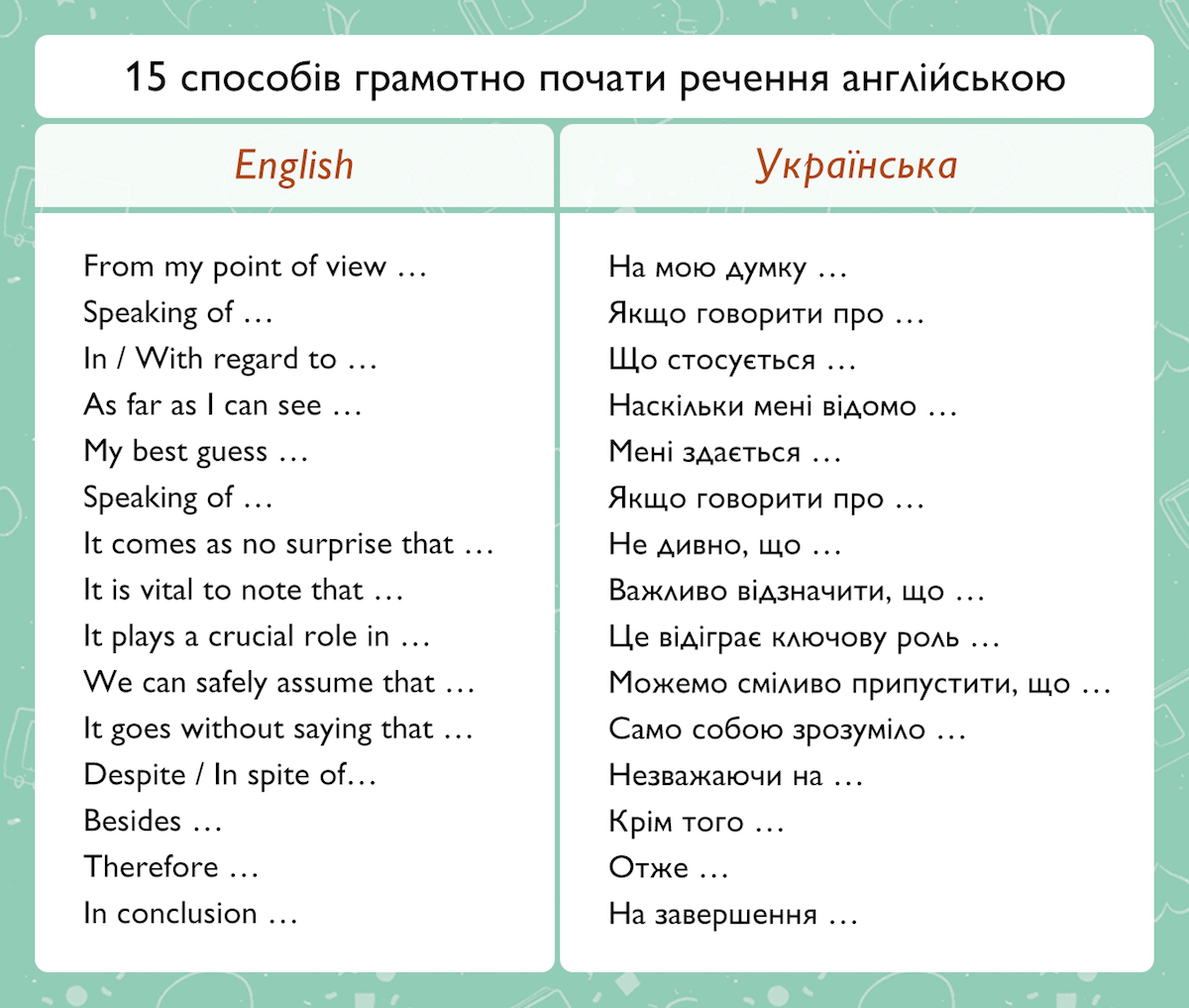
35 вставних англійських слів
Вставні слова допоможуть вам правильно висловити свою думку, грамотно почати речення або з’єднати дві частини складного речення.
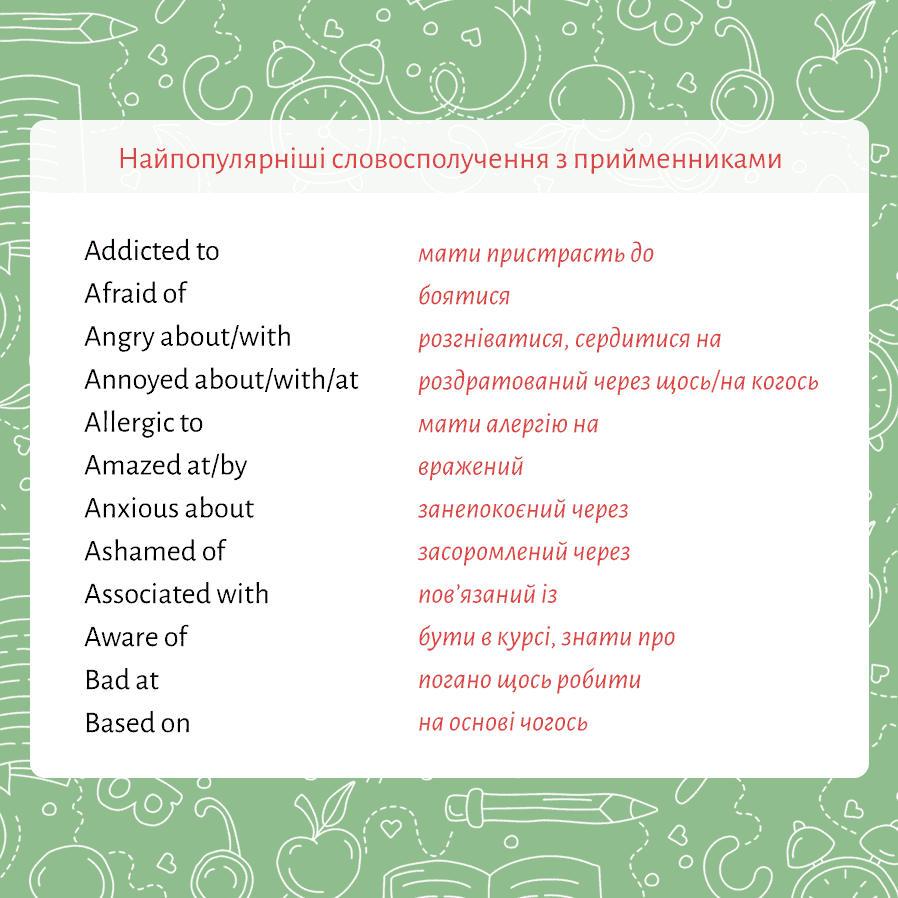
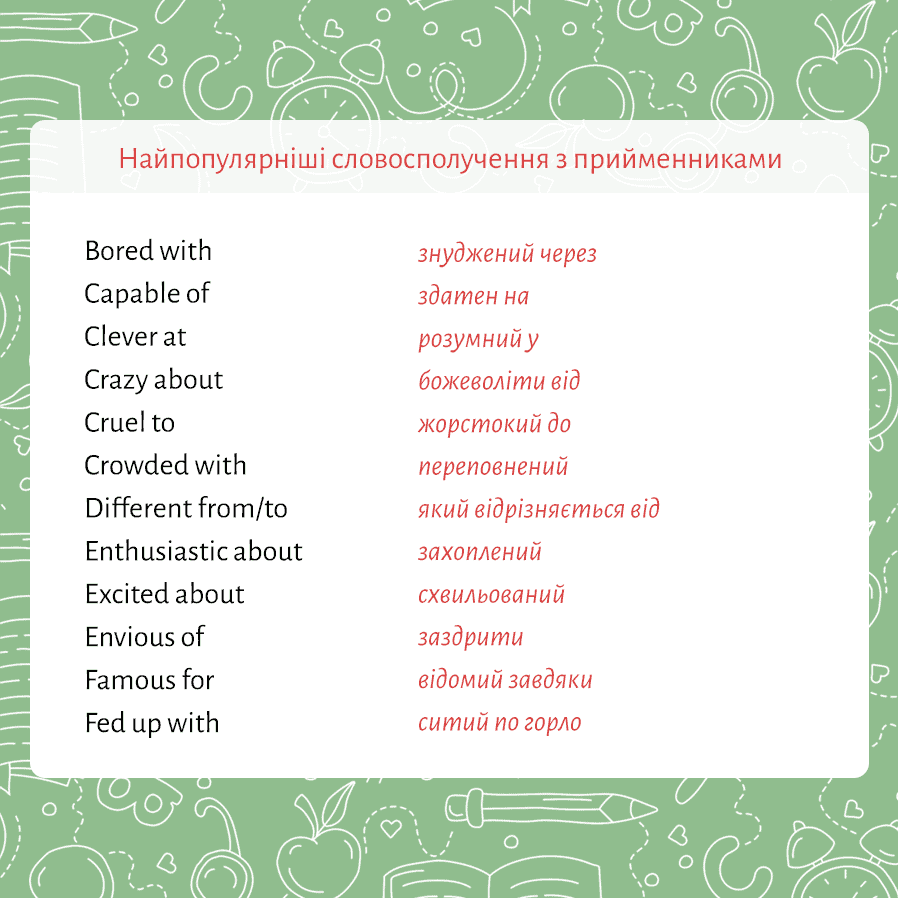
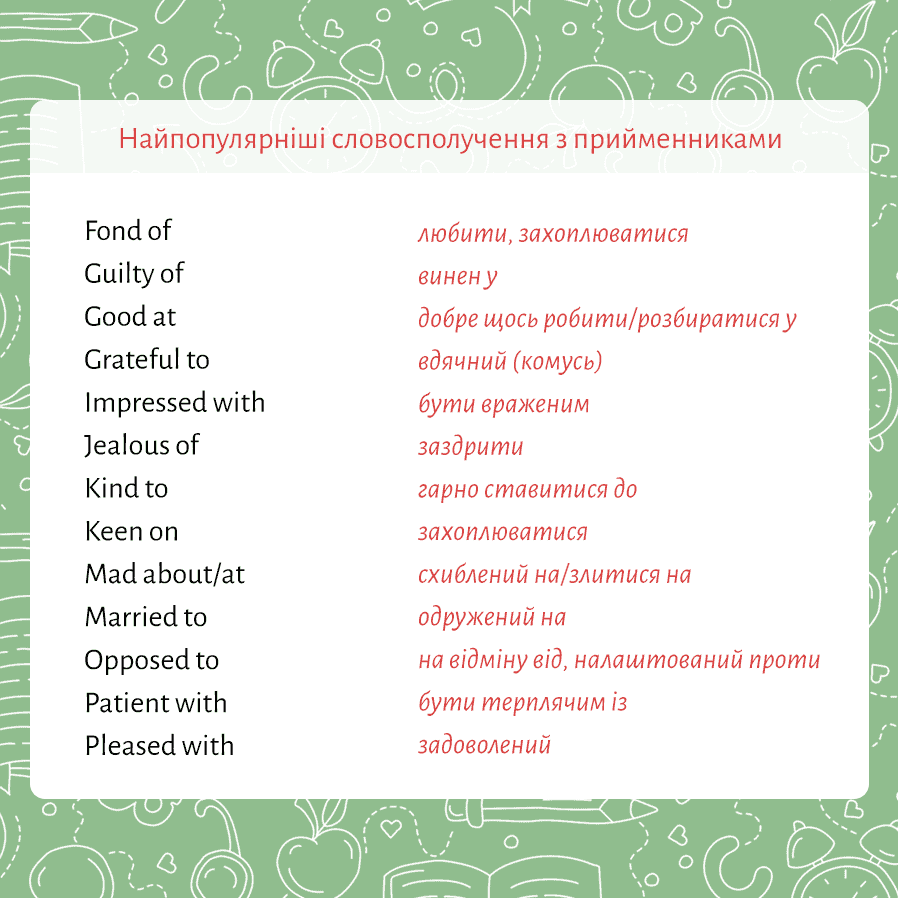
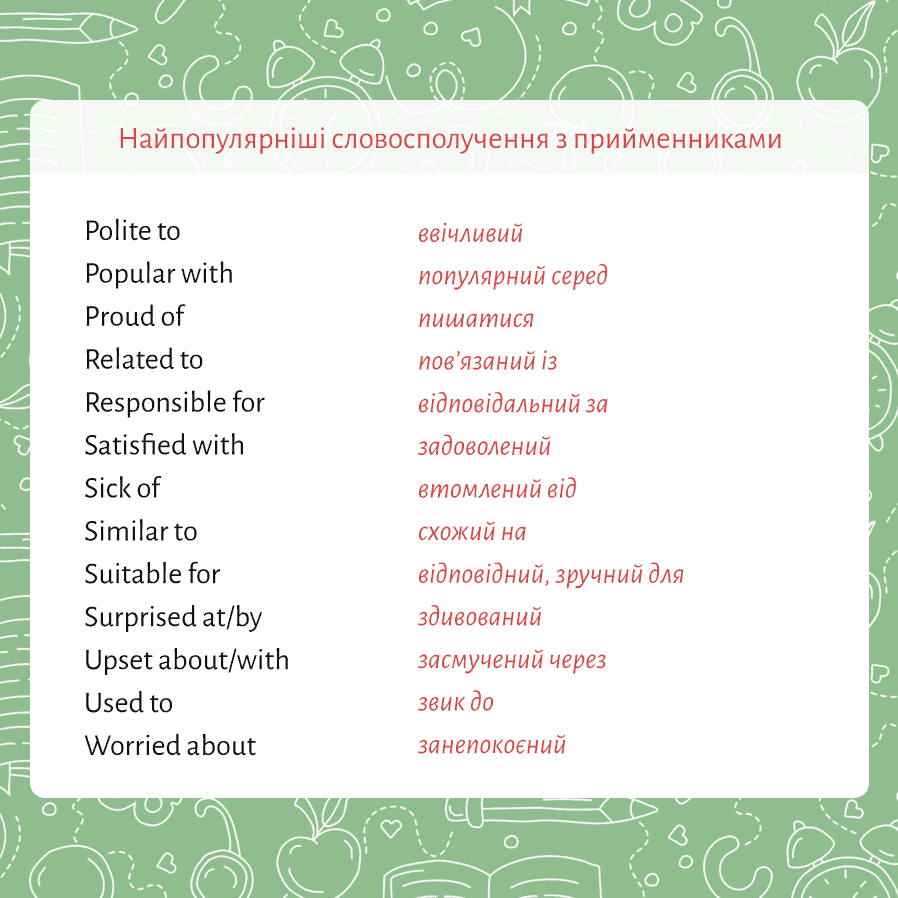
10 способів ввічливо перепитати співрозмовника, якщо ви не розчули
Будь ласка, більше ніяких «What?» і «Come again», особливо в формальному спілкуванні на іспитах або на роботі!
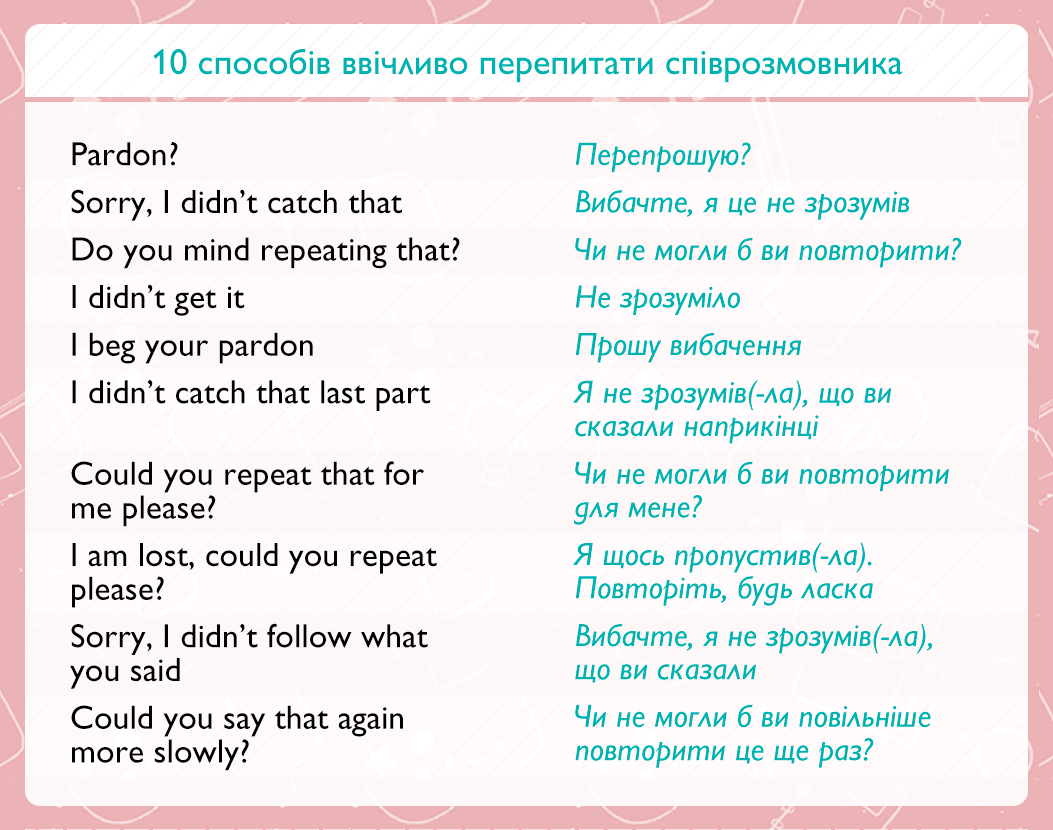
Як висловити підтримку англійською
Хочете підтримати друга під час підготовки до складного іспиту або важливої презентації? Або похвалити за відмінний результат? Вам стануть у нагоді такі англійські слова та фрази.
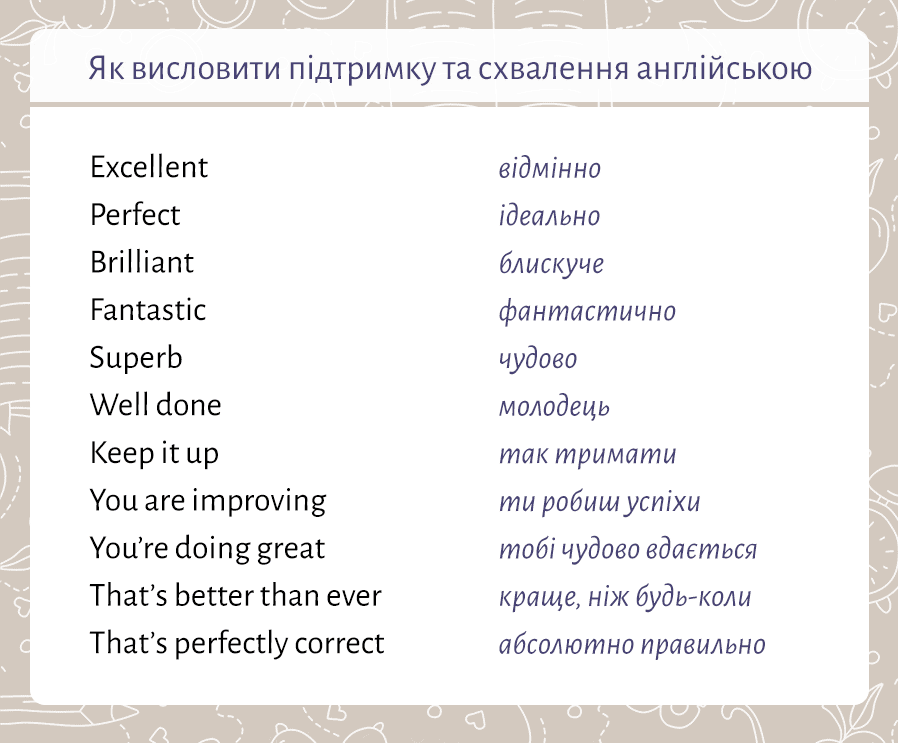
Як прийняти вибачення англійською
Важливо не тільки ввічливо вибачатися, але й відповідати, коли вибачаються перед вами. Ось як можна зробити це англійською.
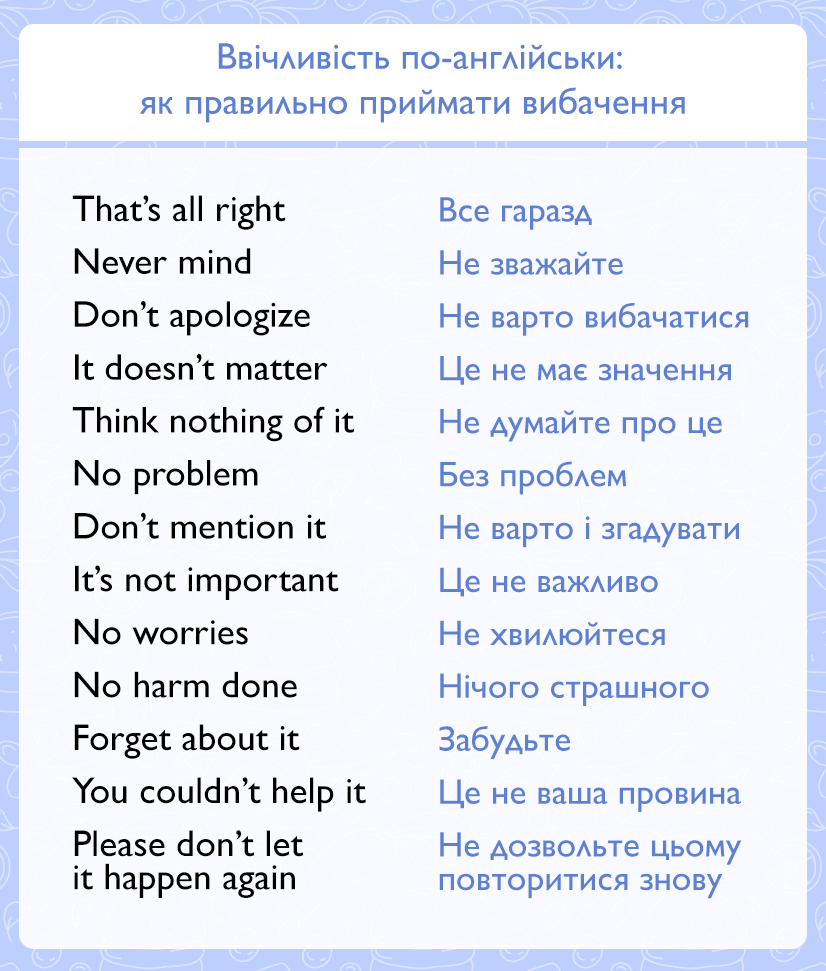
20 наймелодійніших англійських слів
Хочете, щоб ваша англійська мова радувала слух друзів та екзаменаторів? Придивіться до цих слів!
ЧИТАЙТЕ ТАКОЖ: 10 наймелодійніших англійських ідіом
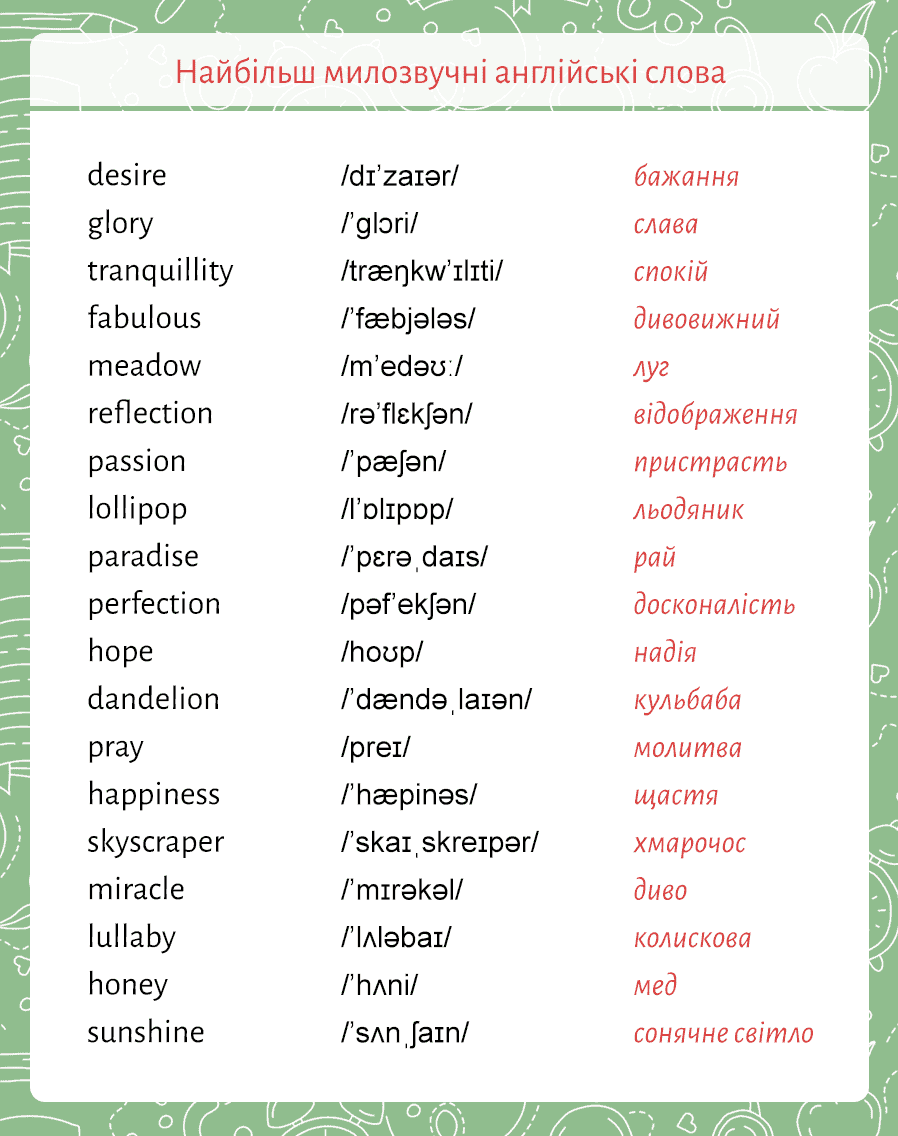
Англійські слова, знанням яких ви будете пишатися
Ці слова знає далеко не кожен. Запам’ятавши їх, ви будете мати повне право пишатися собою.
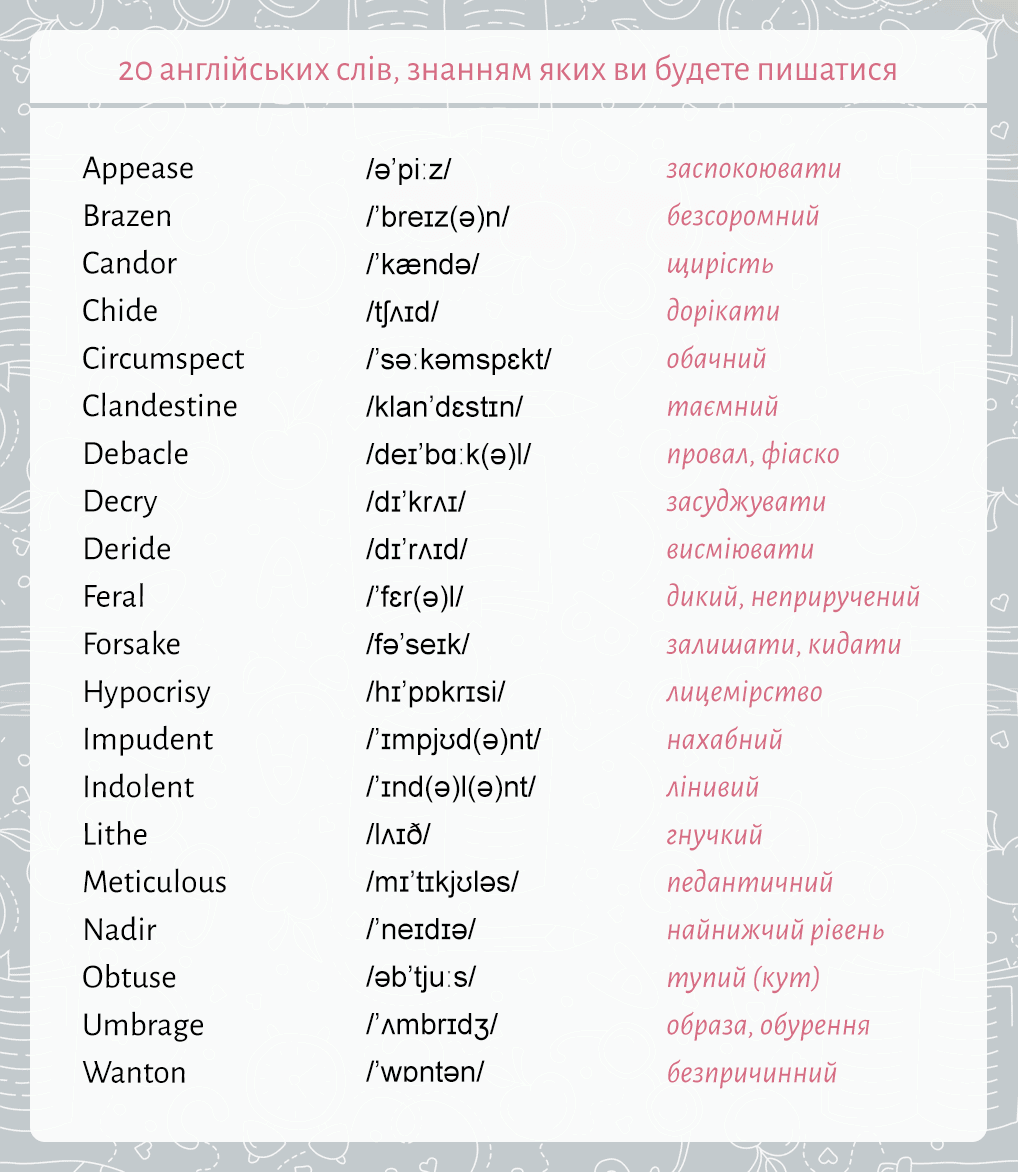
50 найпопулярніших словосполучень з прийменниками
Дуже багато стійки фраз в англійській мові використовуються з нелогічними для україномовних людей прикметниками. Вихід один – просто взяти й запам’ятати їх (або зберегти собі у зручних картинках). Почніть з цих 50 словосполучень і більше не помиляйтеся, особливо на іспитах!
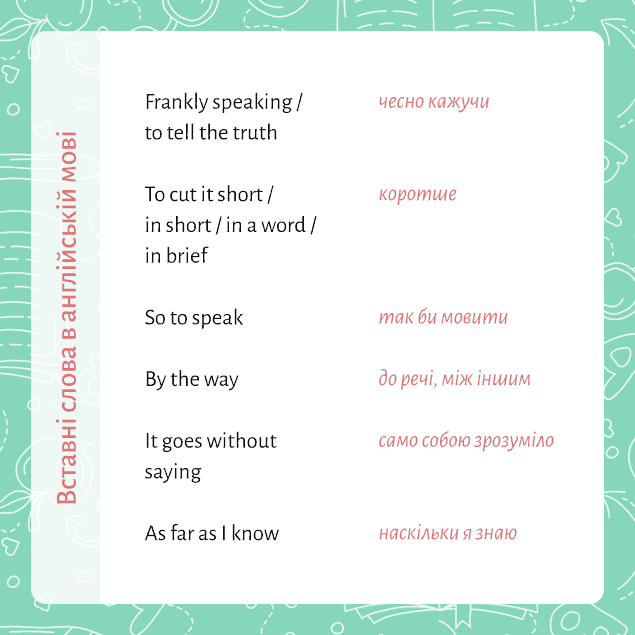
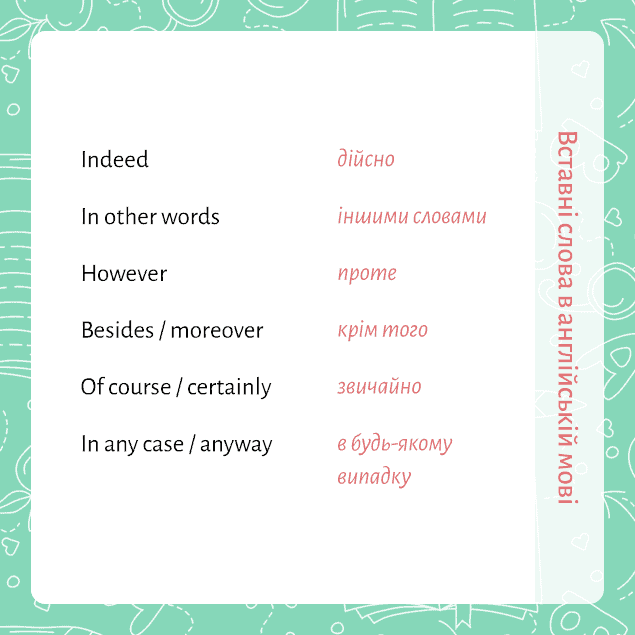
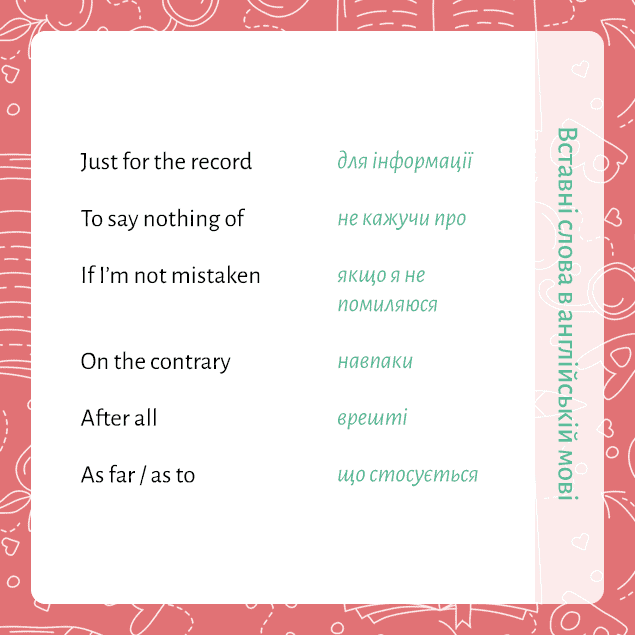
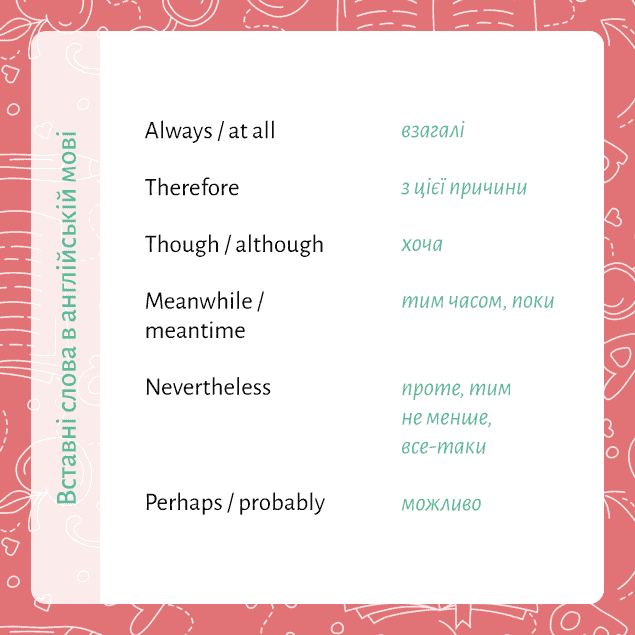
10 фальшивих друзів студентів – англійські слова, з якими легко заплутатися
Також не варто забувати про англійські слова, співзвучні зі словами в українській, які мають зовсім інше значення.
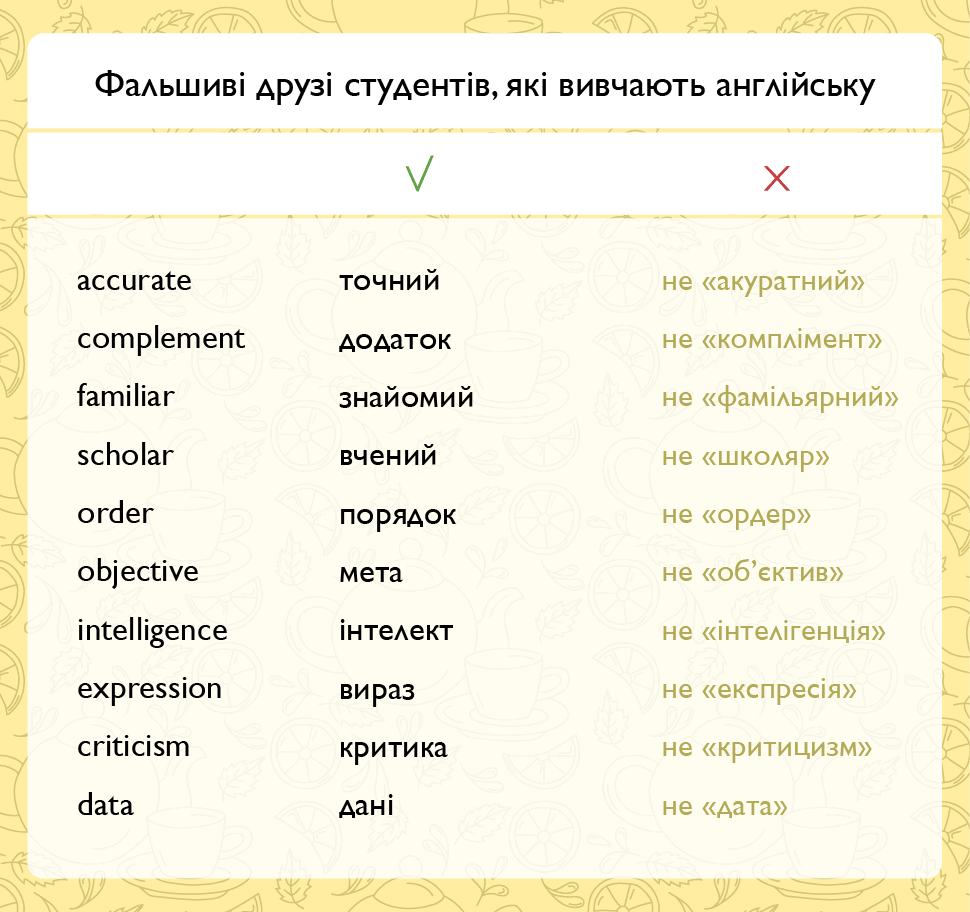
12 англійських слів-паразитів
А цих слів краще уникати на іспитах і в спілкуванні з друзями. Або хоча б вживати не так часто.
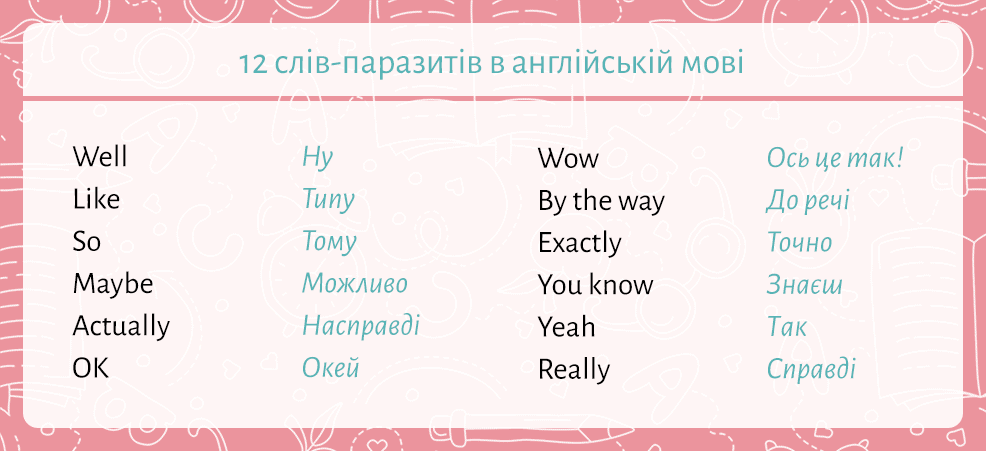
Неформальні скорочення в англійській
Dunno? Lemme? Більше не дивуйтеся, коли ваші англомовні друзі будуть говорити з вами, використовуючи неформальні скорочення. А от на іспитах таких слів краще уникати.
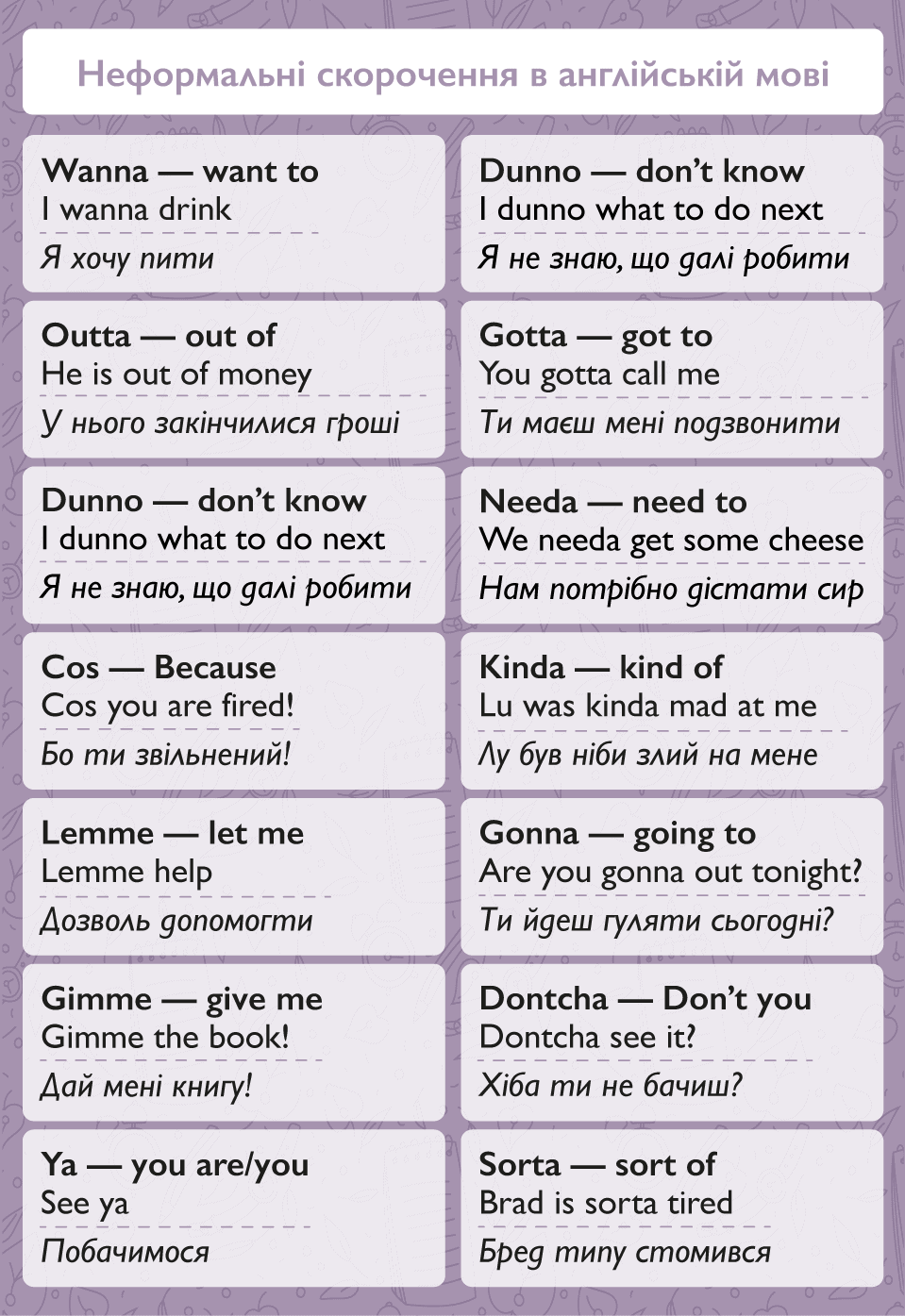
22 англійські абревіатури
Ці абревіатури навряд вийде вжити на роботі в діловому листуванні або на іспиті, а ось для спілкування в месенджерах з друзями вони чудово підійдуть.
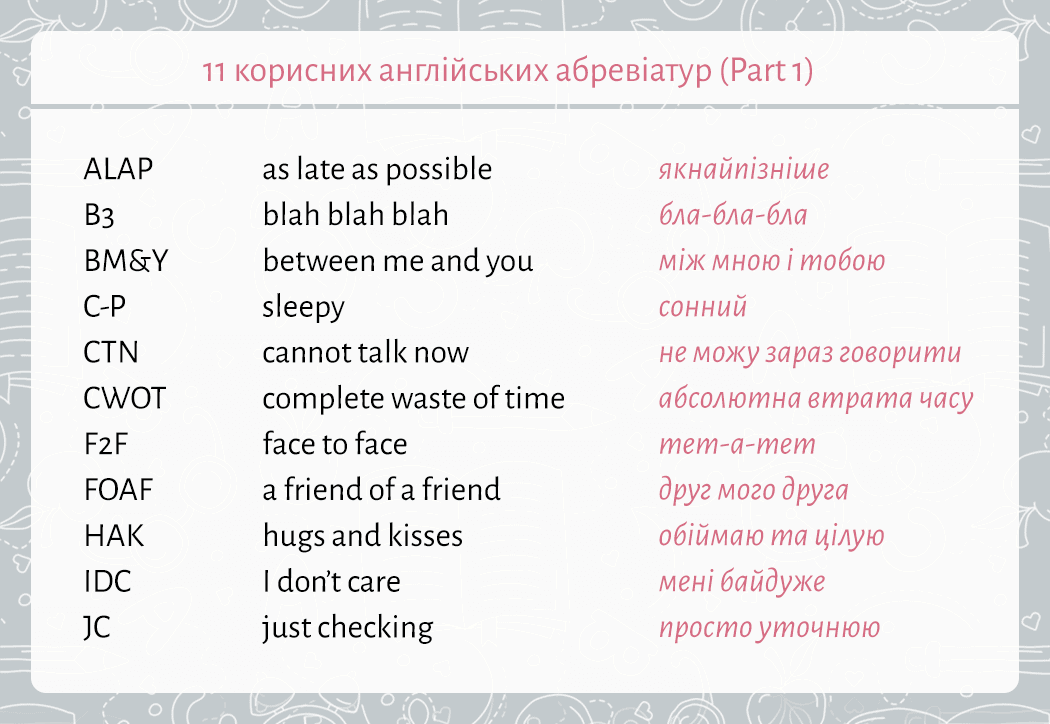
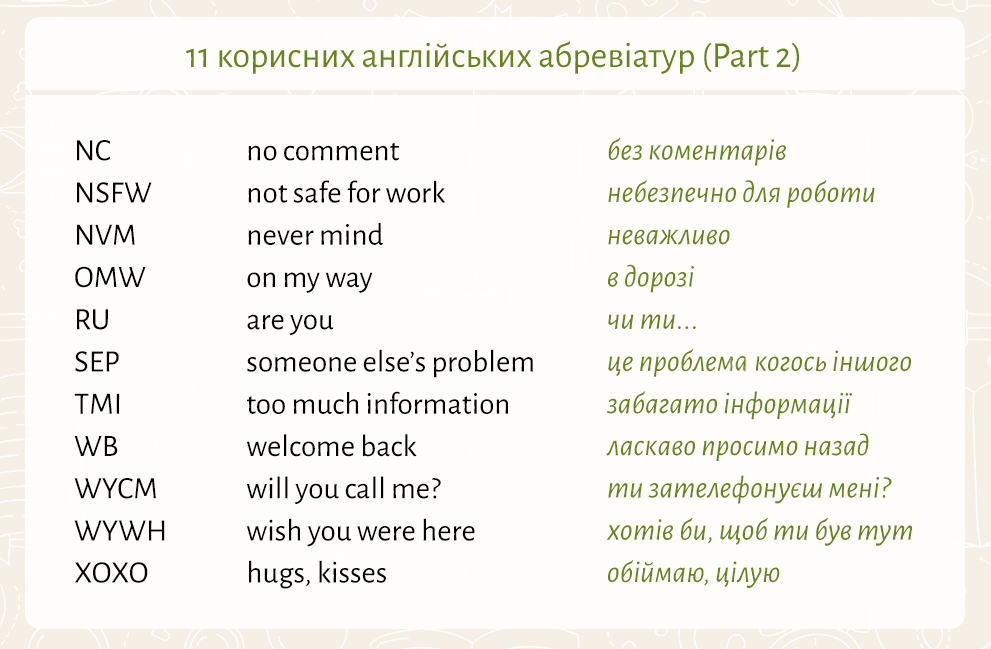
Збираємося в подорож – бронюємо житло на Airbnb
Склали іспити, домовилися про зустріч із друзями на європейських пляжах – тепер можна і збиратися в подорож. Плануєте відпустку самостійно? Чудово! У будь-якому місті світу, навіть найменшому, в якому немає готелів і хостелів, можна знайти житло за допомогою Airbnb. Це квартири, котеджі, будинки та кімнати, які здають їх власники. А щоб не заплутатися, що ж саме ви орендуєте, запам’ятайте види житла англійською. Потім вони стануть в пригоді в есе “How I spent my summer vacation”.
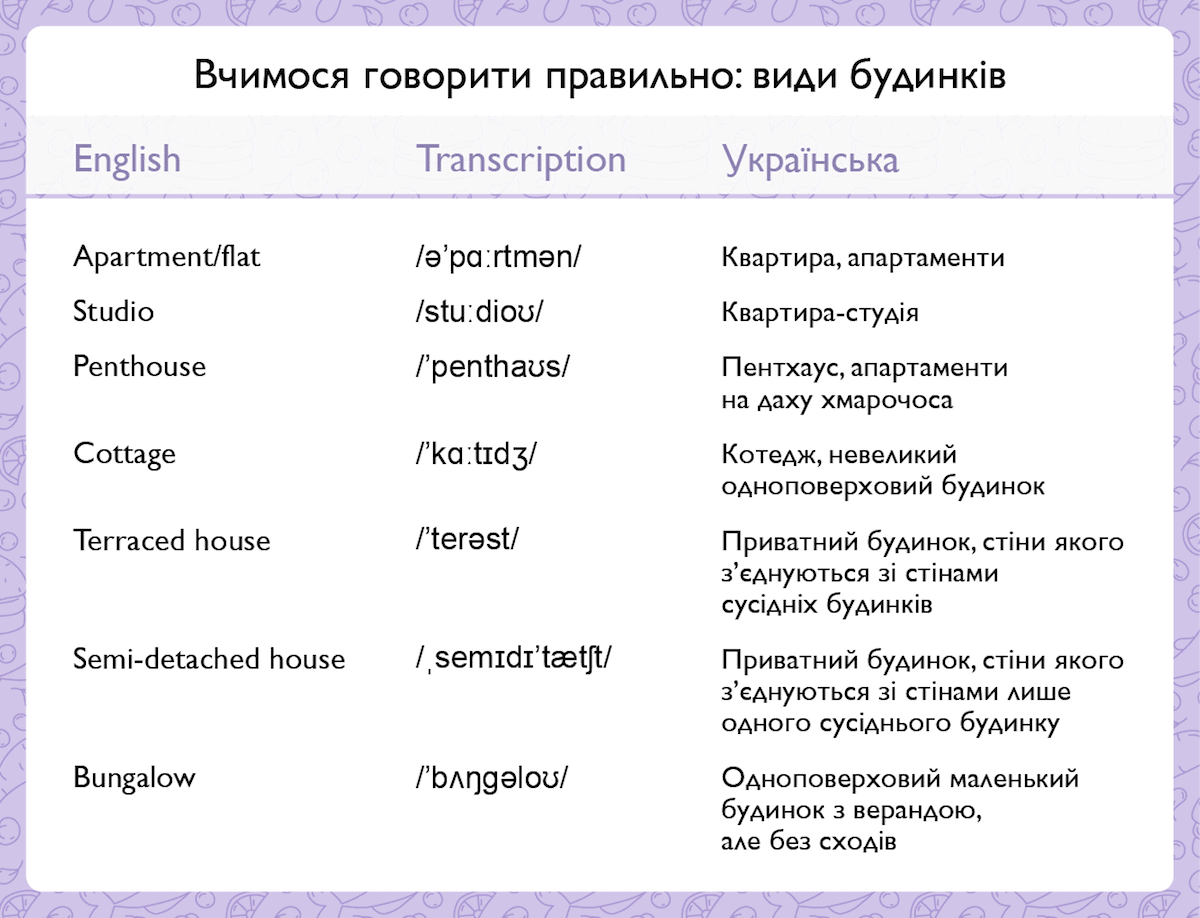
Летимо на відпочинок – англійський словник для тих, хто мандрує літаком
Ці слова обов’язково стануть в пригоді вам в аеропорту і на борту літака. Збережіть до себе в телефон, щоб не заплутатися і не заблукати.
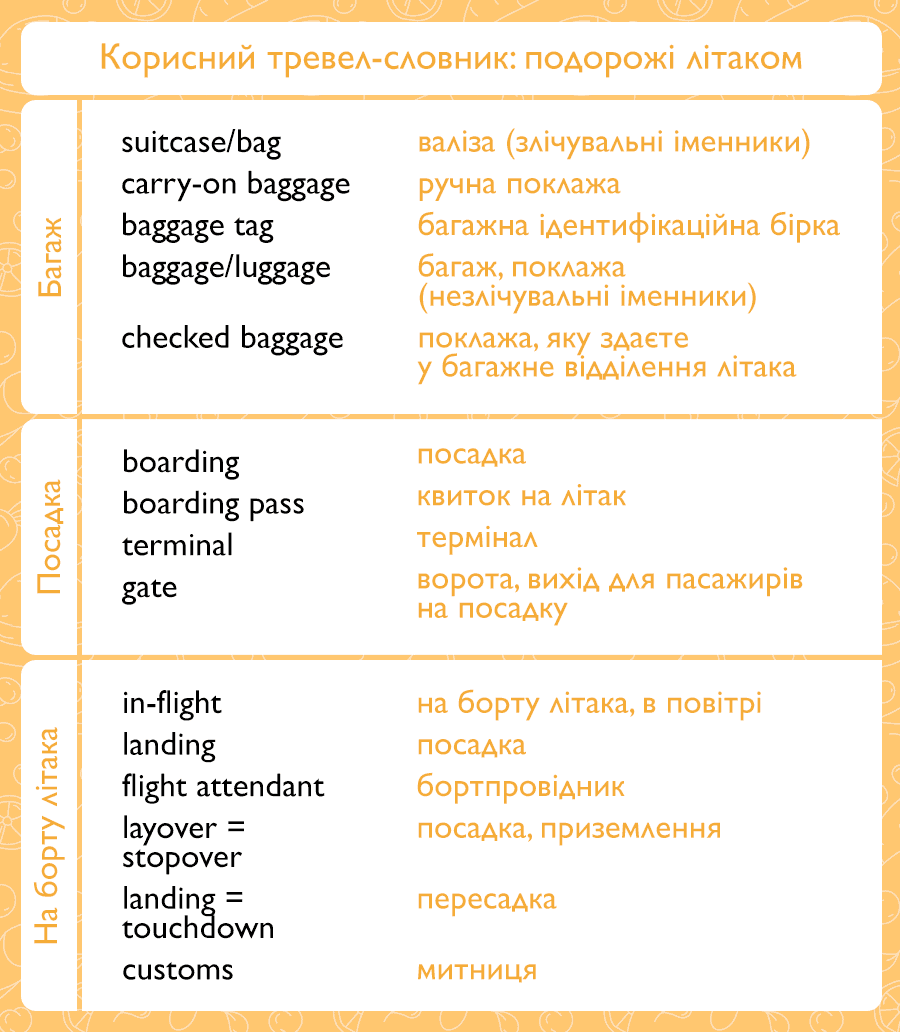
Use Projects
Project work can be the perfect multisensory learning experience to give students the opportunity to make things with their own hands and experience the language and content in a meaningful context. Children are active learners and learn best through concrete tasks and hands-on activities. They learn by doing and will understand and remember both language and content better if they have experienced it through all their senses.
Why use projects?
Many teachers will tell you: projects are challenging to use! They require extra classroom time, extra materials, and extra preparation. However, many teachers will also tell you that the benefits far outweigh the challenges. Some benefits are:
- Students can practice using new language in a meaningful context.
- Students get a chance to relate language and content to their lives.
- Students can engage in real world communication.
- Students can practice important 21st century skills, e.g., the 4Cs: communication, collaboration, creativity, and critical thinking skills.
After students learn new language, they need to practice using it and apply it to real and authentic contexts (Shin & Crandall, 2014). Projects are a perfect way to apply language in new and meaningful contexts.
Three tips for success with projects
Here are three simple tips to help you meet with success when using projects with young learners.
TIP #1: Give young learners step-by-step instructions in multiple ways
It is important to break the project down into smaller achievable steps. It will help your young learners organize their work and be more successful. Be sure to give your young learners step-by-step instructions. For the best results, give your young learners instructions through multiple ways: written, spoken, and visual instructions. If some students cannot understand your oral instructions, they can rely on the visual cues to help them complete the project. This will help your young learners succeed. See the My World Circles project page below with four steps that include illustrations in addition to written text (Shin & Crandall, 2020).

TIP #2: Give students a model of the final product
Be sure you show your students what the final product looks like. If they understand your expectations, they can achieve it. The My World Circles project page includes a child with his project (Shin & Crandall, 2020). As the teacher, you should also demonstrate each step one by one and make your own project as a model for them. If you make your own project with enthusiasm, they will too! Then, your students will have a language model and a role model to follow.

TIP #3: Give students a chance to share their work
Always plan enough time in your lesson for students to share their work. If they know they will have a chance to share their project with others, it will motivate them. Sharing their project gives students a purpose for the work they do. Even more important for the learning process, sharing their project will provide students a chance to practice communicating in English. Take a look at this student sharing her project. She is speaking in complete sentences as she presents her project.
BONUS TIP: Never underestimate your young learners!
If your young learners are genuinely interested in the topic and are motivated by the project, they can go beyond your expectations. Projects are an excellent way to differentiate instruction, so you can allow students to produce variations of a project based on their English proficiency level or even based on their particular skills in art, music, science, or multimedia. If you have students who want to be creative and do an adaptation of the project in your textbook or lesson, let them.
Example from the field
Here is a perfect example of students in Greece who were inspired by project work. The original project was designed for children in grade 6 and is part of a unit about extreme sports, such as skiing, kitesurfing, hang-gliding, and motorcross, to name a few. In the coursebook, students are encouraged to plan an extreme sports camp.

An English language teacher in Greece, Anastasia Metallinou, found a way to inspire her 12-year-old students to engage in the topic of extreme sports and create a project that included building 21st century skills, such as writing digital text and using video to communicate. Instead of creating a brochure or webpage as the project page suggests, her students planned and created a video about an extreme sport they researched. After I saw this video, I could imagine a class working on an extreme sport camp webpage with small groups or pairs creating videos just like this to post on that webpage. Anastasia explained her students’ work, “The girls found, downloaded and uploaded the photos themselves, did the storyboard, wrote and recorded their text, created all the visuals and added the audio at the end.” As scaffolding, she gave her students a storyboard graphic organizer to fill out in order to plan the video. This is how she guided her students to plan their video step by step.
Storyboard Graphic Organizer – By Anastasia Metallinou
| Scenes | What I see in each scene (Save each image you would like to use in a USB, and state the image’s name) | What I say and hear in each scene | What I write in each scene |
| 1 | |||
| 2 | |||
| 3 | |||
| 4 | |||
| 5 | |||
| 6 | |||
| 7 |
Here is the final product: a humorous and engaging video about highlining.
As you can see from this video, we should never underestimate our young learners. English learners who are engaged with the topic and inspired by a project can produce work beyond our expectations. In this case, young learners were captivated by the topic of extreme sports and motivated by the use of media. Even with a project that includes step by step instructions, these young learners went above and beyond. Use projects, and let your young learners surprise you!
References
Shin, J. K., & Crandall, J. A. (Eds.). (2020). Our world (Levels Starter-6) (2nd ed.). Boston, MA: National Geographic Learning/Cengage Learning.
Shin, J. K., & Crandall, J. A. (2014). Teaching young learners English: From theory to practice. Boston, MA: National Geographic Learning/Cengage Learning.
Підписатися на:
Коментарі (Atom)
